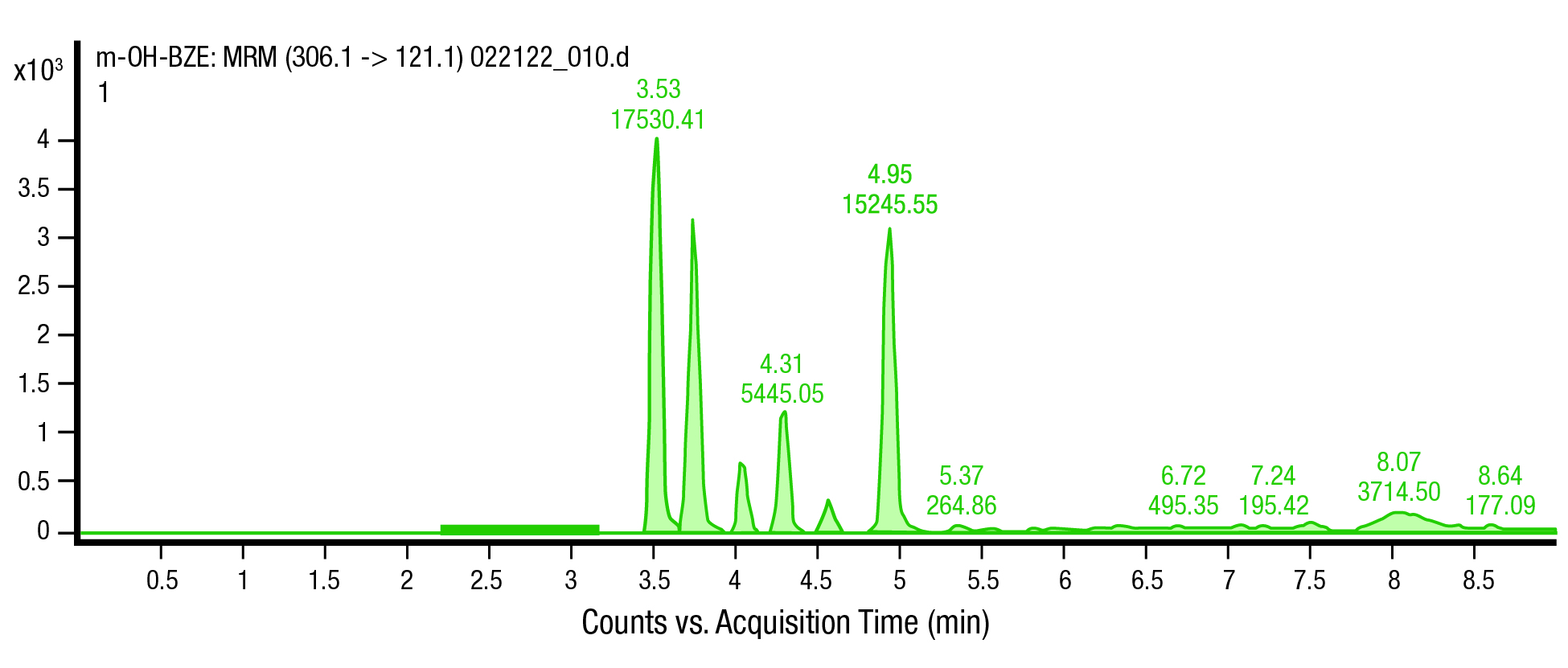Drug tests are often required for criminal investigations, child welfare checks, and compliance with probation or parole. Because drugs remain in strands of hair for months longer than they do in the bloodstream, drug tests based on hair are more robust across time and can provide evidence of drug use in the more distant past. Although neither test can reveal the quantity of drugs consumed, they can identify the drugs present. The challenge is differentiating whether a drug is present due to drug use or environmental contamination.
Toxicology experts note that the distinction is difficult because drugs can enter the hair through blood, sweat, or contact with the external environment. Toxicology labs use wash procedures to remove external contaminants from the hair before analysis. But these decontamination procedures are not standardized, and washing the hair could possibly incorporate drugs into the hair shaft from the surface.[1]
Two NIJ-funded toxicologists from RTI International, Dr. Megan Grabenauer and Katherine Bollinger, have proposed a possible solution: examining the hair for drug breakdown products (metabolites) rather than the drug itself.
The metabolite choice is critical. The scientists examined substances called conjugated phase II metabolites (the parent drug combined with an amino acid), which are drug products that have been metabolized by the body and are generally no longer toxic. They should not be found on or in hair if an individual is merely exposed to drugs and has not used them.
The researchers sought to answer three main questions:
- Are concentrations of these metabolites large enough to be measured?
- Can identifying the presence of phase II metabolites serve as an alternative to current decontamination procedures in hair drug testing?
- Can these metabolites be produced unintentionally during sample analysis?
Extraction Methods Do Not Produce Unintentional Metabolites
Researchers searched for the metabolites in samples from RTI’s hair inventory, which includes hair from individuals known to have used drugs. They hypothesized that samples from known drug users would contain phase II metabolites that had been excreted into the hair. They also used drug-free hair samples to determine whether the extraction methods they created could accidentally produce phase II metabolites.
Their work:
- Determined that phase II metabolites were present in large enough quantities to be measured.
- Developed two methods to extract opioids, cocaine, and amphetamines from hair.
- Verified that the extraction methods did not accidentally produce phase II metabolites.
- Used mass spectrometry[2] to identify the specific substances in the hair (Figure 1).
- Created a list of potential markers of drug use (known as reference standards).
Figure 1. A visualization of several phase II metabolites of cocaine. The peaks represent the cocaine metabolites detected in hair specimens of persons known to have used cocaine.
Extending the Window of Detection
The researchers optimized methods to standardize drug extraction from hair and confirmed that the methods did not inadvertently introduce drug products from the hair surface that could resemble drugs processed by the body. Drug detection from hair (rather than blood) extends the detection time frame, and the examination of conjugated phase II metabolites allows for the differentiation between drug use and environmental exposure. The ability to accurately determine drug use is broadly beneficial but particularly critical in a judicial context. However, research was partially limited by the small number of hair samples from individuals with known drug use. It was also limited by the availability of phase II metabolites for use as reference standards and method optimization.
Despite these limitations, metabolite analysis holds great promise as a superior drug testing method. According to the researchers, the “detection of conjugated metabolites in hair may directly affect the current policies and procedures for hair drug testing. It could alleviate concerns over the potential for external contamination and issues with interpretation of hair drug testing results.”
About This Article
The work described in this article was supported by NIJ award number 2019-DU-BX-0021, awarded to RTI International.
This article is based on the grantee report “Phase II Metabolites of Drugs in Hair: A Potential Solution for Environmental Contamination” (pdf, 32 pages), by Megan Grabenauer and Katherine Bollinger.


